Black chrome plating a door handle
Black chrome plating a brass door handle
This project guides you through the process of black chrome plating on brass.
In order to plate black chrome successfully onto brass, it’s necessary to first plate a layer of nickel or white bronze.
Please refer to the Tech Specs tab on the smoky chrome product page for ideal temperature.
This project also demonstrates how useful the conductivity tester can be in saving you time before you start plating.
Please note: The Rectifier shown in this project has now been discontinued and replaced by the MF Rectifier Mk II.
At the foot of the page you'll find a troubleshooting section.
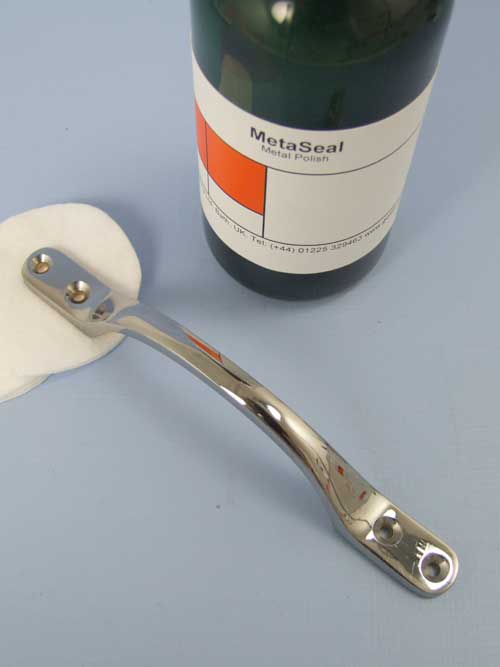
1. What you’ll need
Solutions; nickel or white bronze plating solution, smoky chrome brush plating solution. Equipment; Conductivity Tester, beaker 2 Electrode Handles, fitted with Platinum or Carbon Electrodes
MPU, MetaSeal.
Rectifier: MF Rectifier Mk II set to brush plating mode.
For help with setting up your brush plating equipment, please click HERE for a guide.
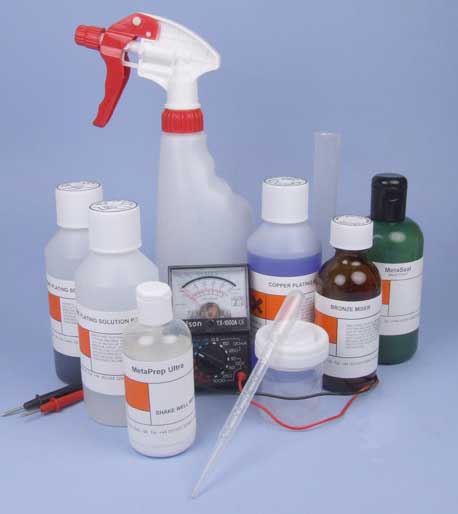
2. Using the Conductivity Tester
Before you start, check that the surface you’re plating is conductive. This is particularly important if the object you’re plating is a decorative item that is designed to be handled regularly, as these items are often coated with a protective layer of lacquer to prevent tarnishing. This layer will stop any plating taking place and will be detected by the conductivity tester. If this is the case and your item is coated with lacquer, proceed to the next step. If not and the needle on your tester shows the surface to be conductive, go straight to the fourth stage.
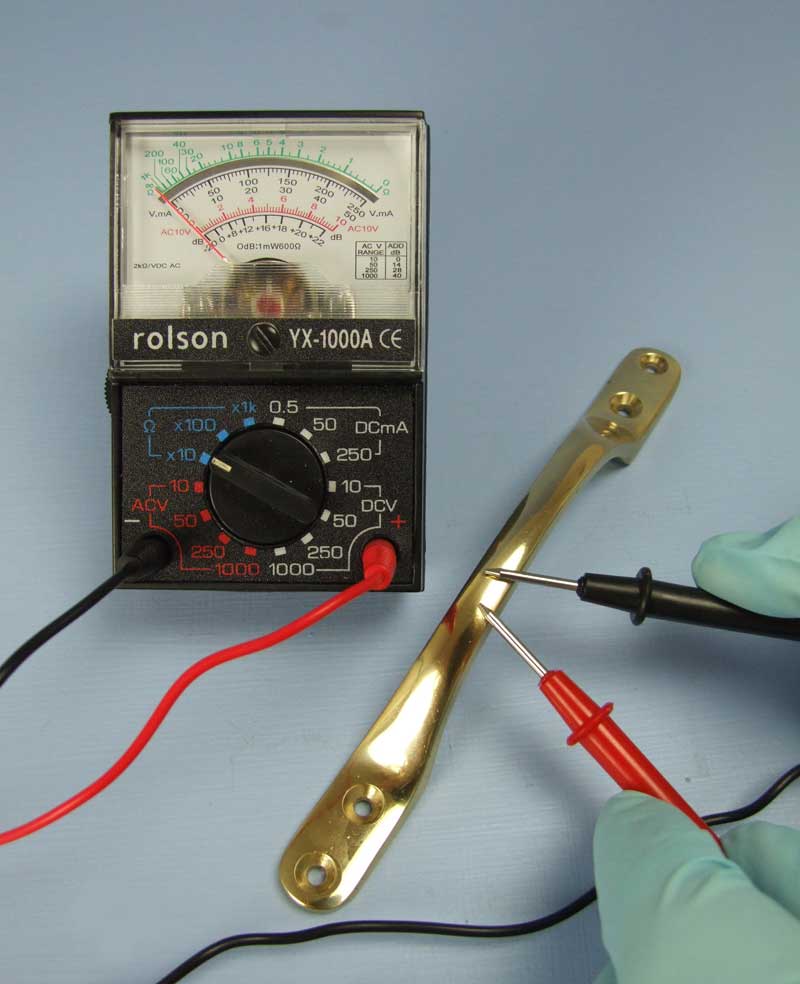
3. Stripping off any lacquer
Strip the lacquer off with the same kind of preparation you would use to strip household paint from doors or varnish from floors. We suggest that you do this twice, to be absolutely sure that you’ve removed all traces of lacquer. Clean thoroughly with MPU and then test again with the Conductivity Tester, before you start plating.
4. White bronze plating
Remember to fit a platinum or carbon electrode into your electrode handle, using the allen key supplied with the electrode handle kit. Adjust the voltage if necessary and start plating with the usual circular strokes of the swab.
5. Smoky chrome plating
Adjust the voltage according to the the tech specs on the product or the label on the product bottle and start plating with regular, circular strokes.Try to make electrical contact in an area that is out of site to prevent marking of the work. Alternatively you could use one of our Conductor Strips, which can be purchased from our website.
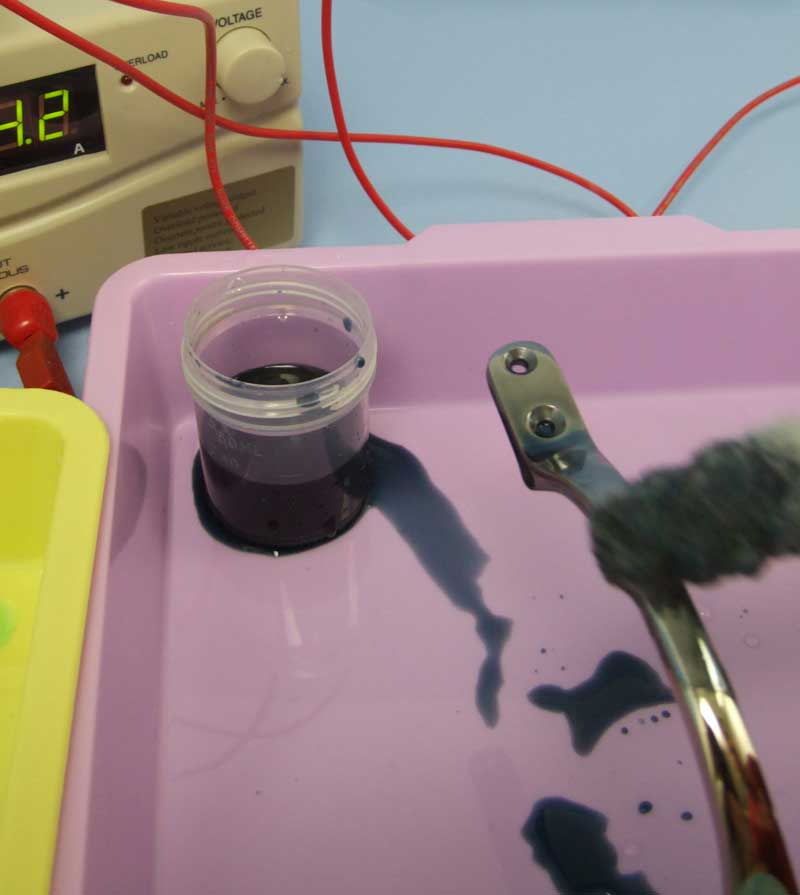
6. Finishing
Rinse with deionised water. Dry and seal with MetaSeal.
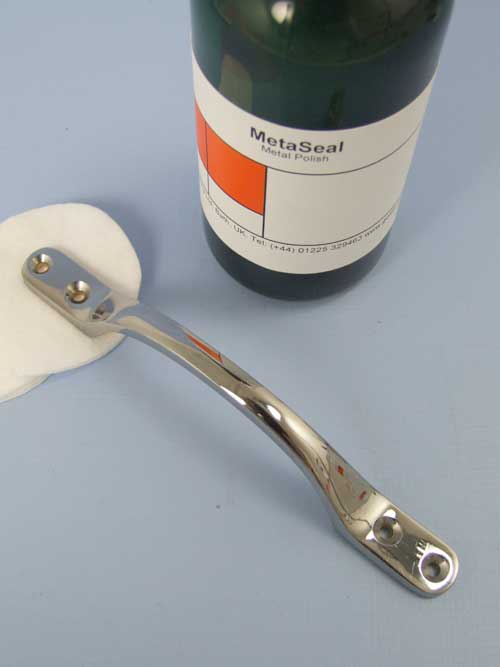
Troubleshooting table
| Type of problem | Possible reason | What to do |
|---|---|---|
| No Plating taking place | 1. Voltage too low. 2.Incomplete electrical circuit 3. Surface not clean enough. 4. Surface inactive because of thin film of oxidisation especially when plating on to stainless steel. | 1. Increase voltage as per Tech Specs tab on product page. 2. Check all electrical connections and clean if necessary. Make sure the swab is fully soaked in solution. 3. Repeat cleaning cycle. 4. Rub with MPU and if plating on to stainless steel gold flash. If the piece you are plating is large (making it likely that the nickel undercoat will be exposed for a length of time), we recommend you gold flash and then smoky chrome plate to avoid this problem of oxidisation. |
| Plating is patchy or not plating at all | 1. Refer to all of the above. 2.Incomplete stripping of already present chrome layer. | Strip the existing chrome and rub with MPU. |
| Dark streaks appearing in the plating. | Metallic contamination, most commonly caused by iron for nickel rom using a stainless steel electrode. | Check that the contamination isn’t caused by any other stage of the process and replace the stainless steel electrode with a carbon electrode. |
2 responses to “Smoky chrome plating a brass door handle”
Leave a Reply
You must be logged in to post a comment.

Hello there and excellent work, I’ve just left a similar question on what looke like the US version of this site (might be wrong though) basically, I am looking at what our options with brass are. It’s definitely all about the brass with us. Initially I was just looking at Rhodium plating, but now anything that will stop oxidising that we can do in-house.
Copper – would whatever the solution for brass be, be transferable to copper too? Thanks!
Hello Raymond,
You could consider a rose gold finish to stop it oxidising though it will not be so wear resistant.